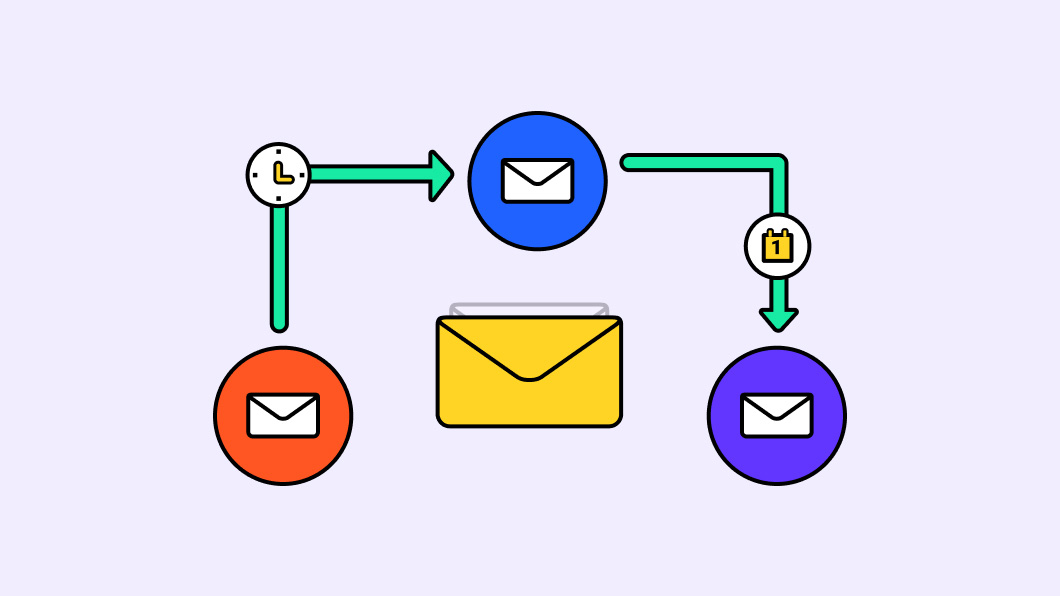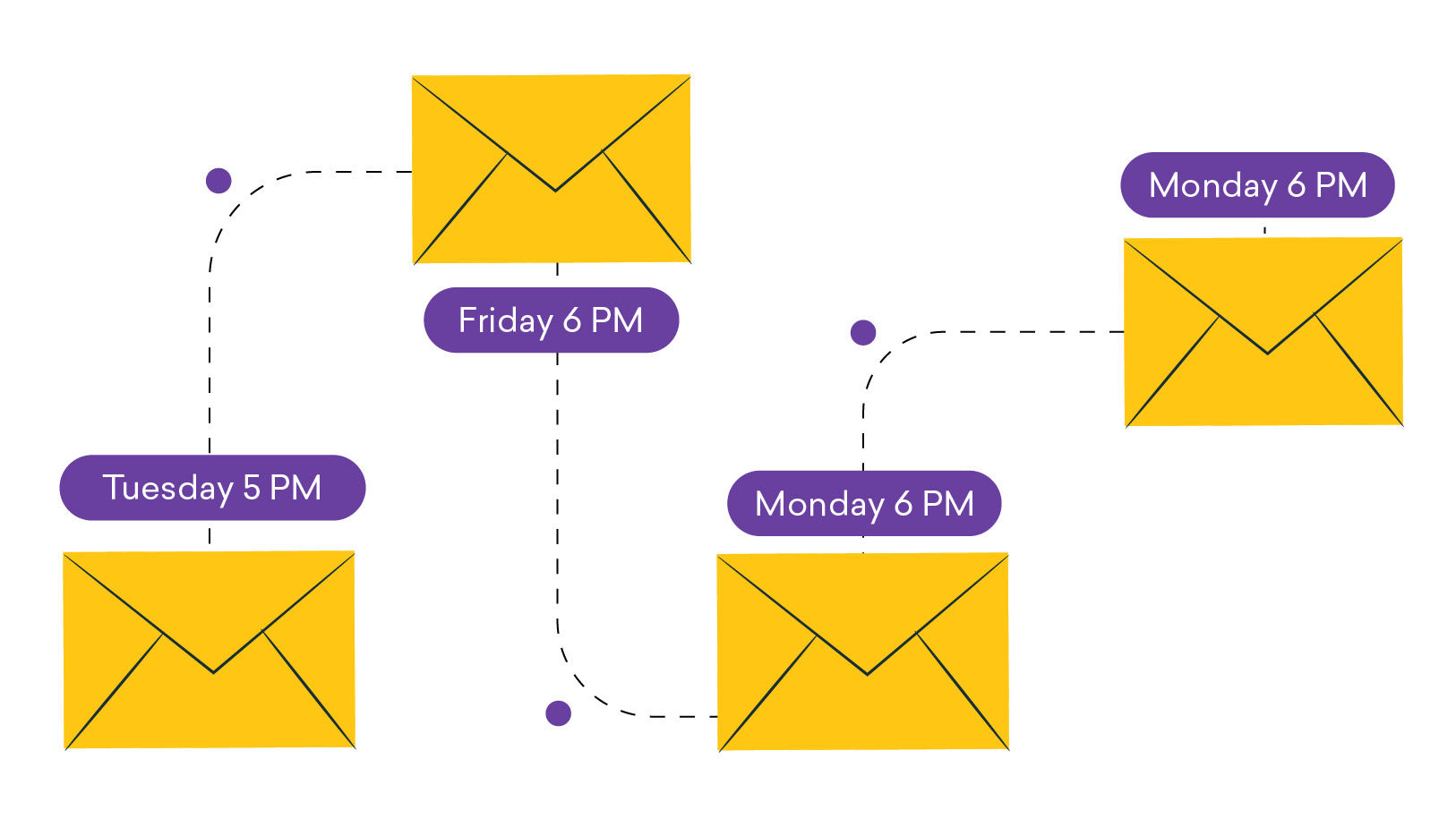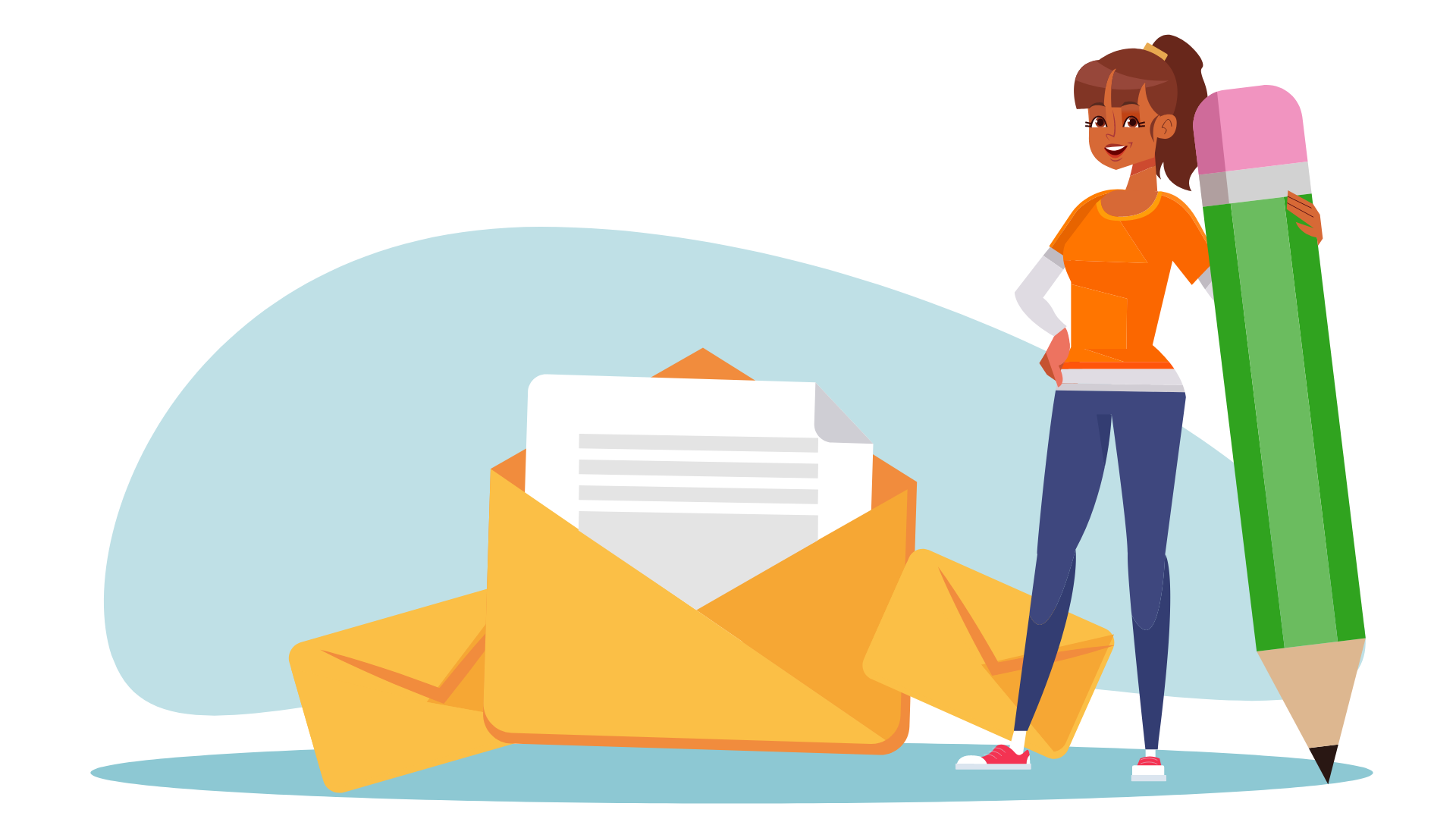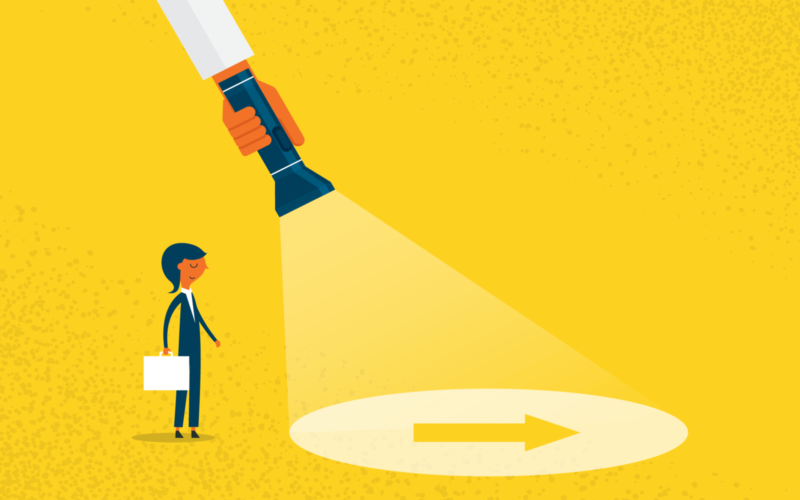Enhancing your profits and boosting sales from your email list is a straightforward task with the use of a couple of well-crafted email sequences.
It goes beyond just monetary gains – understanding the workings of sequences allows you to effortlessly automate your business and set it on ‘autopilot.’
We focus on sequences because they’re key to getting fast and simple results despite automation having a wider range.
This guide is here to help you tap into that power.
What Constitutes an Email Sequence?
In simple terms, an email sequence is a scheduled series of emails sent to a subscriber.
Imagine receiving the first email, followed by the second a few days later, creating a logical order. The purpose is to collaboratively work towards a specific objective, with each email contributing to the overall goal.
Real-World Example:
Consider an online store selling fitness equipment. The email sequence for new subscribers interested in starting a fitness routine spans five emails over two weeks:
Welcome Email:
Introduce the brand, welcome the subscriber, and offer a special discount on the first purchase.
Workout Tips:
Provide beginner workout tips using basic equipment.
Healthy Eating Habits:
Discuss the importance of nutrition and offer healthy eating tips.
Success Stories:
Share success stories from customers, building trust in the brand.
Limited Time Offer:
Conclude with a time-limited deal on a popular fitness product, encouraging a purchase.
What Sets This Apart from Drip Campaigns?
Originally, “drip campaigns” described the gradual release of content over time.
Real-World Example:
In a classic drip campaign, let’s say someone signs up for an online cooking school. They’d get emails over time that gradually cover:
Welcome Email (Day 1):
Warm welcome, introduction to the baking course, and a downloadable recipe book.
Basic Ingredients (Day 3):
Information on essential baking ingredients.
Fundamental Techniques (Day 7):
Basics of baking techniques, like measuring and mixing.
Popular Recipes (Day 10):
Sharing popular baking recipes.
Advanced Tips (Day 14):
Offering advanced baking tips and exclusive discounts for further courses.
This gradual approach allows subscribers to absorb information systematically, creating engagement and anticipation for each email.

Intelligent Sequences vs. Simple Drips
While simple drip sequences may involve sending the same set of emails to everyone, intelligent sequences offer a more personalized experience.
For instance, in a subscription service for an online magazine:
Segmentation:
Tailoring emails based on initial interests, such as tech-related articles for technology enthusiasts.
Behavioral Adaptation:
Adjusting the sequence for subscribers engaging with specific content.
Triggered Events:
Sending follow-up emails based on specific actions, like clicking on an article about smartphones.
This smart method goes beyond regular dripping. It gives you a personalized experience based on what you like and do. It starts automatically when a specific thing happens. There are lots of situations where you might want to use this approach.
Key Takeaways:
The bottom line is, you can boost your email marketing results effectively by using sequences. Whether you refer to your welcome series as a ‘drip campaign’ or a ‘sequence’ doesn’t really matter.
Top Examples of Email Sequences
There are various types of email sequences you can create, but here are some common examples applicable to any business.
Let’s delve into these to help you understand the concept and provide tips on what to implement first.
Welcome Email Sequence:
A welcome series consists of a series of emails where you introduce yourself, your brand, or your newsletter. The specifics will vary based on your business model.
Typically, you’ll share some stories and set expectations about the value subscribers can gain.
The goal is to create a strong first impression and initiate the crucial initial phase of building a relationship with the subscriber.
To create the right welcome series, approach it as a journey. Consider the subscriber’s experience from the moment they subscribe to the end of the welcoming series. It’s also beneficial to define what you aim to achieve at each stage of the journey.
Onboarding Email Sequence:
Onboarding is the method of familiarizing individuals with your product or service. It’s similar to a welcome sequence but focused on ensuring users have a smooth start using your service or product, even if it’s a free trial.
A well-designed onboarding process should be enjoyable for the customer while effectively showcasing all the benefits and features of your product.
Depending on your product’s nature, this process may include video and audio tutorials, personalized chats, scheduled product demos, and webinars.
To make the best onboarding experience, think like the person going through it. Figure out what questions they usually have. And always let them know you’re just an email or chat away, ready to help them make the most of your product.
Educational Sequence:
The main focus should be on providing value through educational content. Most emails should offer valuable information rather than being promotional. Organizing educational sequences allows you to work systematically, building on previously covered topics.
Re-engagement Email Sequence:
Regularly cleaning your email list is essential. Non-engaged subscribers negatively impact your email reputation. Before removing them, try a re-engagement campaign to give them a chance to reconnect.
I can’t give you any hard and fast rules as it will depend on your exact business model and what you promote and say in the re-engagement campaign.
Upsell & Cross-sell Email Sequence:
Build on the trust of previous buyers by offering relevant deals based on their purchases. Use triggers to guide them towards additional products or upgrades.
Once someone becomes your customer, they are more likely to pay attention to your emails, leading to better engagement.
Identify complementary products and suggest them after purchase or encourage an upgrade to a higher-tier product or service for increased profitability.
Booking Sequence:
Perfect for nurturing leads who schedule meetings, appointments, or events. This sequence provides information, education, and reminders leading up to the booked date.
Key Takeaways:
Remember, the key is understanding the concepts behind each sequence, and the specific names matter less than implementing strategies that align with your business goals.
Best Practices for Email Sequences
Now that you have a range of example sequences let’s explore best practices to maximize your efforts:
Pick a Clear Objective:
Define a specific goal for your sequence, especially as it becomes more complex.
Identify Triggers:
Recognize the action, behavior, or event that initiates your sequence.
Provide Value and Relevance:
Focus on offering valuable, relevant content in your emails.
Define Clear Calls-to-Action:
Explicitly ask subscribers to take specific actions aligned with your objective.
Start Simple, Test, Iterate:
Begin with simplicity, test your results, and refine based on subscriber responses.
Get a Strategic Partner on Your Side
In these articles, we aim to provide the clearest possible guidance. However, since each business is unique, we have to speak in general terms.
If you’d like a more tailored understanding of how to implement email marketing in your specific business, let’s have a conversation.
It’s easy to find an email-sending platform, in fact, there are a ton of them. Finding one that focuses on things that matter, however, is a bit more complicated.
Explore how Contact Consumers can tailor its solutions to enhance your bottom line.




